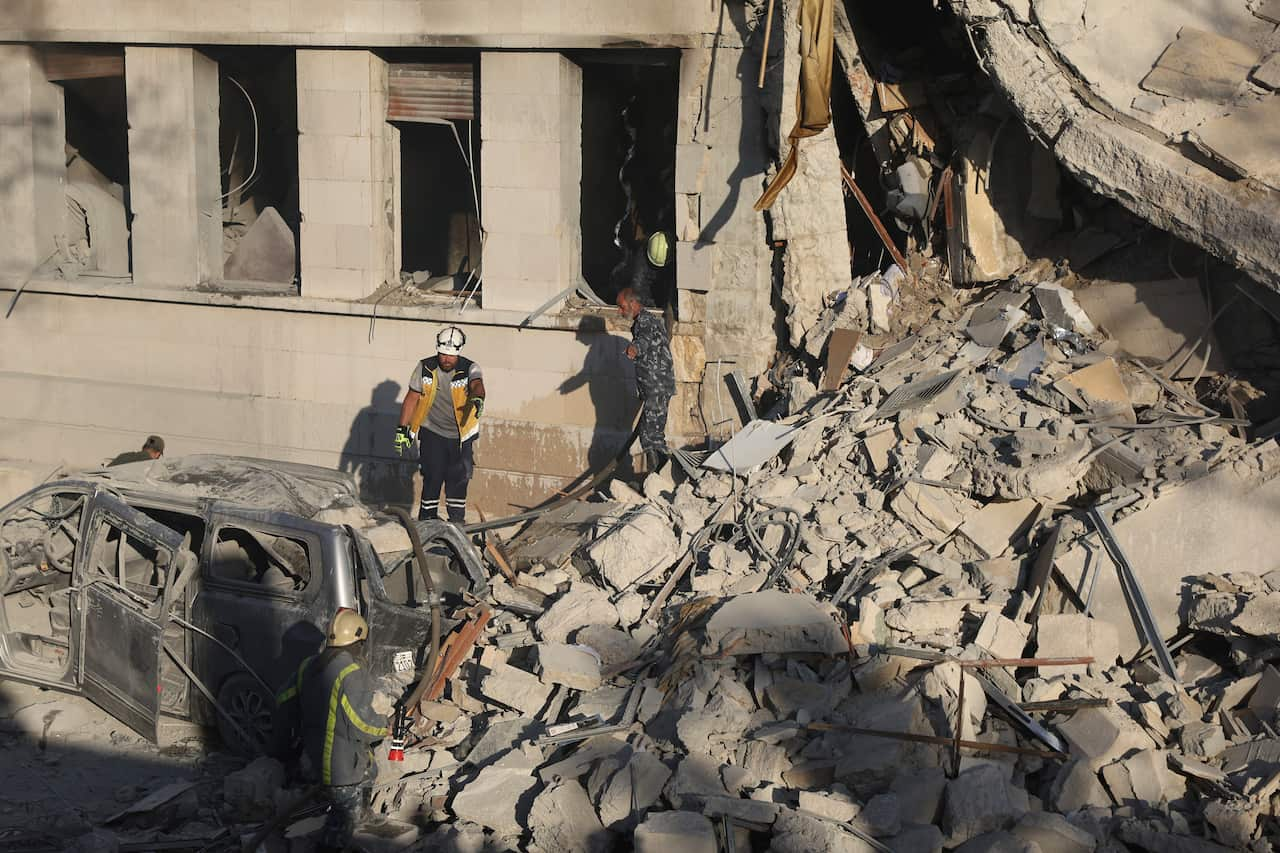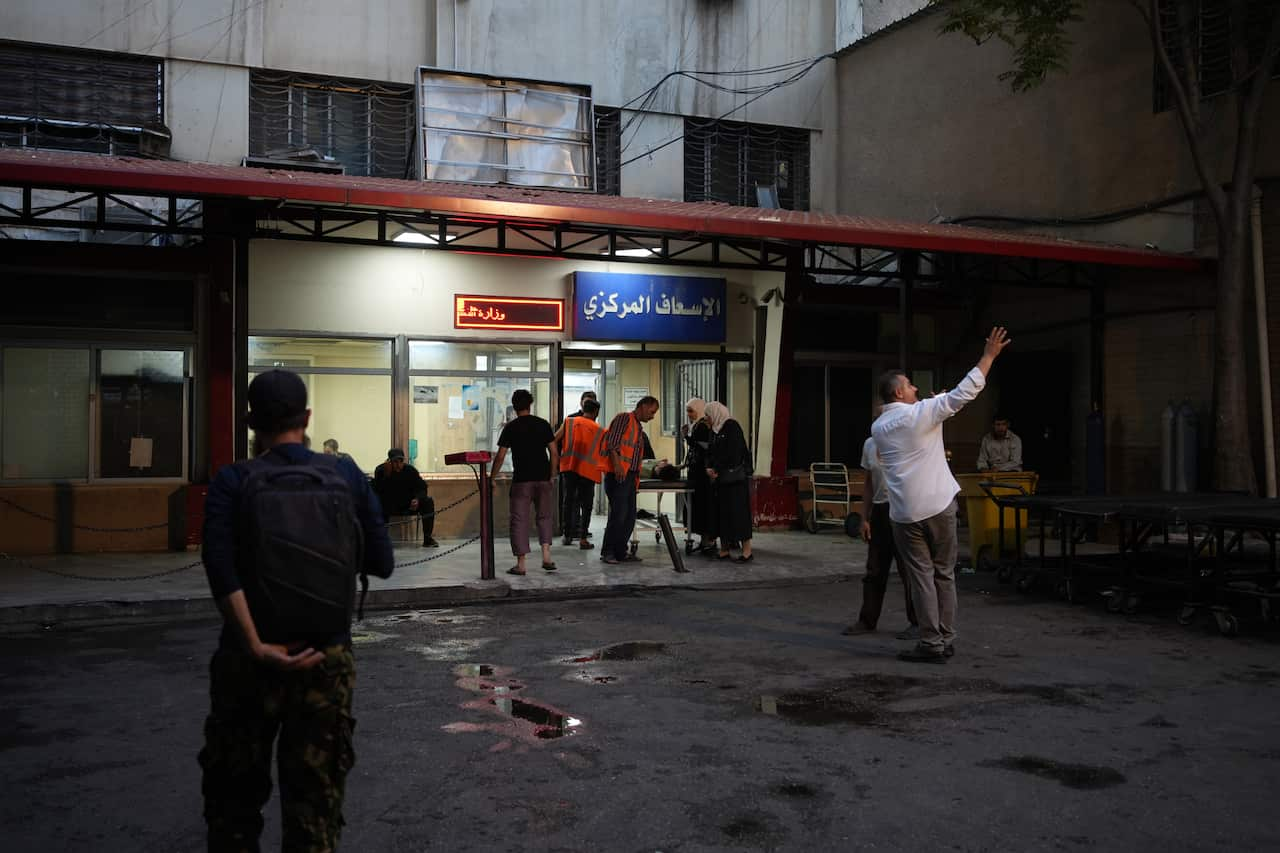Israel has bombed Syrian government sites and other targets since Monday, saying it was seeking to defend the Druze minority after bloody sectarian clashes in southern Syria.
Technically at war with Syria for decades, Israel has said it would not accept the presence of forces of the Islamist-led government in the country’s south, which borders the Israeli-occupied Golan Heights.
Israel began its strikes as Syrian government forces deployed to the heartland of the Druze minority in the southern province of Sweida, following deadly clashes between Druze fighters and Bedouin tribes.
Israel has said it would intensify its attacks if Syrian forces do not withdraw from the south.
How did it begin?
Clashes began on Sunday between factions from the Druze religious minority and Bedouin tribes, who are Sunni Muslim, killing more than 100 people.
The two sides have a longstanding feud in Sweida.
Syrian government forces sent reinforcements to the region, in the country’s south, saying they want to reestablish security.
But according to witnesses, Druze armed groups and the Syrian Observatory for Human Rights monitor, government forces and allied groups including Bedouins took control on Monday of several villages near Sweida that were previously run by Druze fighters.
Druze people from Golan and Galilee gather at the ceasefire line, trying to cross the buffer zone to enter Syria, near the Village of Majdal Shams, in the Golan Heights. Source: AAP / Atef Safadi / EPA
On Tuesday, following contacts between Damascus authorities and notables from Sweida, the Syrian defence ministry announced a ceasefire after government forces had entered the city.
Before then, Sweida, home to around 150,000 people, was controlled by various Druze factions.
Syria’s three main Druze spiritual leaders, who sometimes hold differing views on political issues, called on local fighters on Tuesday to lay down their arms.
However, Hikmat al-Hijri, one of the leaders, then accused Damascus of failing to uphold its commitment to enter Sweida peacefully and called for “resisting this brutal campaign by all available means”.
Terrified residents of Sweida have reported numerous abuses since the entry of government troops and their allies, including executions, looting and burning houses.
Army HQ, presidential palace
On Wednesday, Israel said it struck the headquarters of the Syrian army in Damascus, a compound that also houses the defence ministry.
Witnesses also told AFP they heard an explosion in the area of the presidential palace, where the Israeli military said it had struck a “military target”.
Syrian state television reported further Israeli strikes on the army headquarters compound, where a wing of the four-story building was destroyed.
The Syrian health ministry said that at least three people were killed and 34 wounded in the strikes on Damascus.
Civil defence workers inspect the Syrian defence ministry building after it was heavily damaged by Israeli airstrikes. Source: AAP / AP / Ghaith Alsayed
Attacks on Sweida
On Wednesday, the official Syrian news agency SANA announced an Israeli drone strike on the predominantly Druze city of Sweida.
The day before, the Israeli military said it had bombed “military vehicles of the regime forces in Sweida”.
On Monday, it struck several government tanks in the province.
Sweida province is home to the country’s largest Druze community, followers of an esoteric religion that split from Shiite Islam who are mainly found in Syria, Lebanon and Israel.
According to the Syrian Observatory for Human Rights monitor, more than 300 people have been killed since Sunday in clashes between Druze fighters, Bedouin tribes and government forces, and in Israeli strikes.
The dead include 165 government forces but also 27 Druze civilians killed in “summary executions … by members of the defence and interior ministries”, said the Observatory.
‘Powerful blows’’
On Wednesday, Israeli defence minister Israel Katz on Wednesday demanded that Syrian forces withdraw from the south.
He promised that troops would “operate forcefully in Sweida to eliminate the forces that attacked the Druze until their full withdrawal”.
People arrive at Al-Mouwasat Hospital after Israeli airstrikes on Damascus, Syria. Source: AAP / Ahmad Fallaha / EPA
Katz said that “the signals to Damascus are over — now come the painful blows”, sharing Syrian television footage of an explosion in Damascus on his X account.
Syria said the Israeli strikes were a “dangerous escalation” and affirmed “its legitimate rights to defend its land and people”.
New government
Even though it has initiated contact with the new Syrian government, headed by Ahmed al-Sharaa, Israel still remains extremely wary of the Islamist-led administration.
Since December, when Sharaa’s group spearheaded an offensive that toppled longtime ruler Bashar al-Assad, Israel has carried out hundreds of strikes against military sites in Syria, claiming its goal was to prevent weapons from falling into the hands of the new government.
Israel also sent troops into the demilitarised buffer zone on the Golan Heights — part of which it has occupied from Syria since 1967 — and carried out incursions deeper into southern Syria.
Some 153,000 Druze live in Israel, where they are citizens, and unlike other Israeli Arabs are subject to compulsory military conscription.
On Wednesday, Israeli forces fired teargas to prevent dozens of Druze from crossing the frontier.
US says agreement reached
US secretary of state Marco Rubio said on Wednesday in a post on X that “we have agreed on specific steps that will bring this troubling and horrifying situation to an end tonight”.
The European Union urged “all external actors” to fully respect Syria’s sovereignty and territorial integrity”, later demanding Israel “immediately cease” its strikes.
United Nations secretary-general António Guterres also condemned the Israeli airstrikes.









